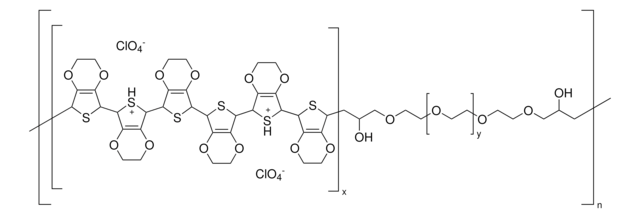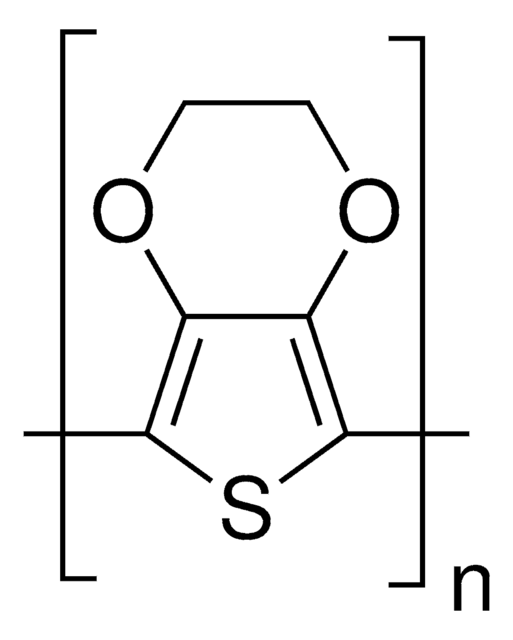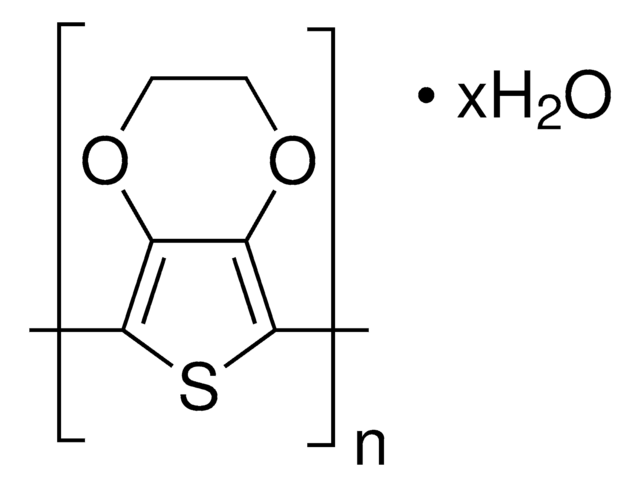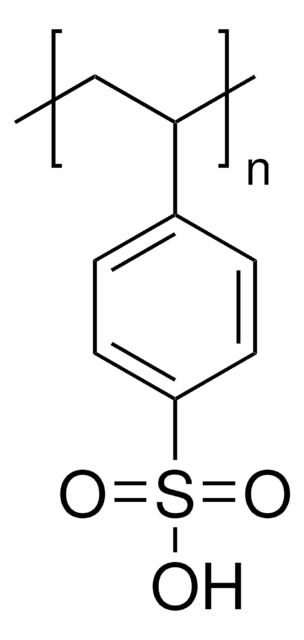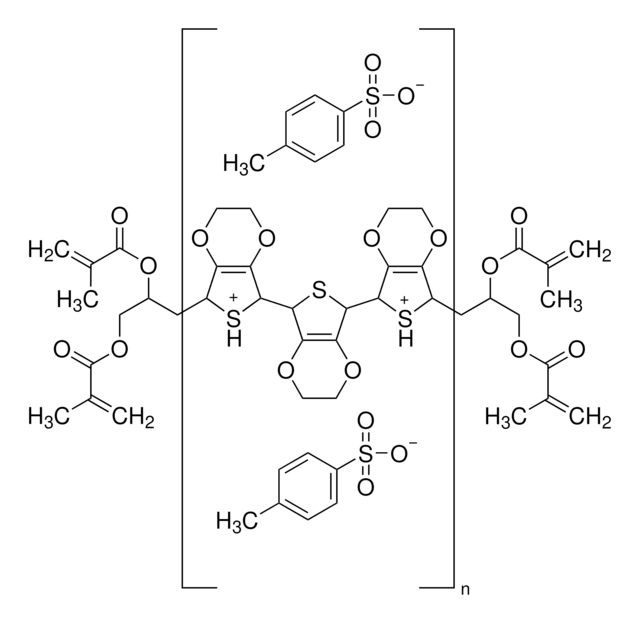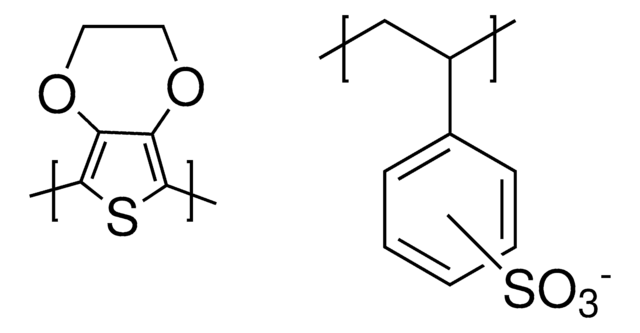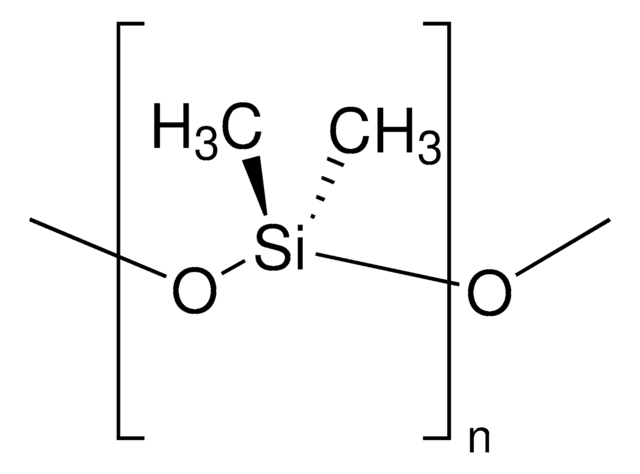736287
PEDOT
bis-PEG, lauryl terminated, 0.8 wt. % (propylene carbonate dispersion), contains perchlorate as dopant
Synonym(s):
Aedotron™ C3-PC, C12-PEG-block-PEDOT-block-PEG-C12, PEDOT:PEG
About This Item
Recommended Products
Product Name
Poly(3,4-ethylenedioxythiophene), bis-poly(ethyleneglycol), lauryl terminated, 0.8 wt. % (dispersion in propylene carbonate), contains perchlorate as dopant
form
liquid (dispersion)
Quality Level
contains
perchlorate as dopant
composition
acetonitrile, 4-8 wt. %
Aedotron™ TM-C3 polymer, 0.2-0.9 wt. %
propietary processing additive, 0.1-0.7 wt. %
propylene carbonate, 90-95 wt. %
propylene glycol, 0.0-0.3 wt. %
concentration
0.6-1.1 wt. %
0.8 wt. % (dispersion in propylene carbonate)
refractive index
n20/D 1.411
particle size
200-600 nm (in suspension)
conductivity
10-45 S/cm (bulk)
density
1.141 g/mL at 25 °C
Looking for similar products? Visit Product Comparison Guide
Related Categories
General description
Application
- Printed line width, 120 μm
- Printed line cross-sectional area, 14.1μm2
- Printed line average height, 70.6 ηm
- Sheet resistance, 2.0 kOhms/Square
- Resistivity, 14,021 μOhms·cm (71 S/cm)
- Fairly good optical clarity
Features and Benefits
Caution
Other Notes
Legal Information
Signal Word
Warning
Hazard Statements
Precautionary Statements
Hazard Classifications
Eye Irrit. 2 - Flam. Liq. 3
Storage Class Code
3 - Flammable liquids
WGK
WGK 2
Flash Point(F)
100.0 °F
Flash Point(C)
37.8 °C
Choose from one of the most recent versions:
Already Own This Product?
Find documentation for the products that you have recently purchased in the Document Library.
Customers Also Viewed
Articles
Progress in Organic Thermoelectric Materials & Devices including high ZT values of >0.2 at room temperature by p-type (PEDOT:PSS) & n-type (Poly[Kx(Ni-ett)]) materials are discussed.
The application of conducting polymers at the interface with biology is an exciting new trend in organic electronics research.
Optoelectronic devices such as light-emitting diodes (LEDs), solar cells, and light-emitting field effect transistors (FETs) that utilize organic materials as their light harvesting and/or charge transporting component have been the subject of much academic and commercial attention.
Dr. Tan and researcher introduce recent trends in Self-healing Soft Electronic Materials and Devices. The emergence of smart, functional SHPs will be highly beneficial to the advancement of the next-generation self-healing soft electronic devices. Autonomously self-healing devices could help to minimize the need for repair or replacement of electronics and machines, potentially reducing the cost of materials and reducing electronic waste.
Global Trade Item Number
| SKU | GTIN |
|---|---|
| 736287-25G | 4061833510568 |
Our team of scientists has experience in all areas of research including Life Science, Material Science, Chemical Synthesis, Chromatography, Analytical and many others.
Contact Technical Service